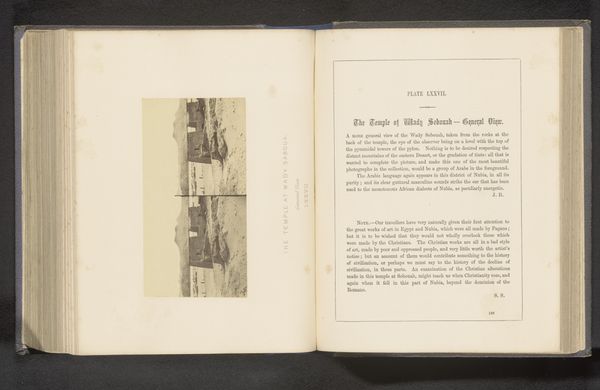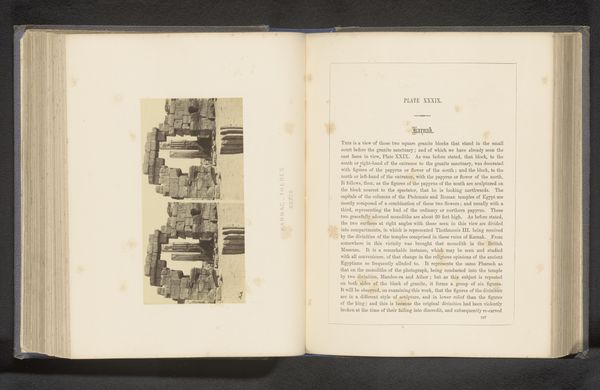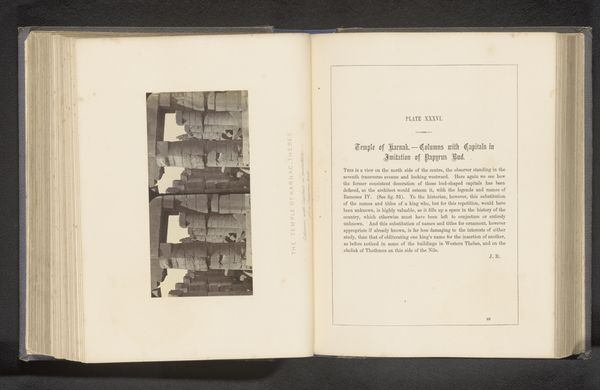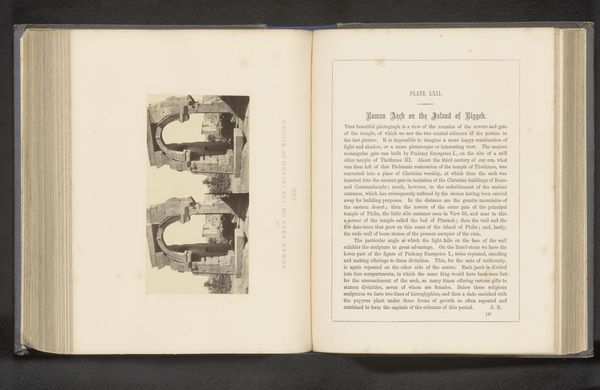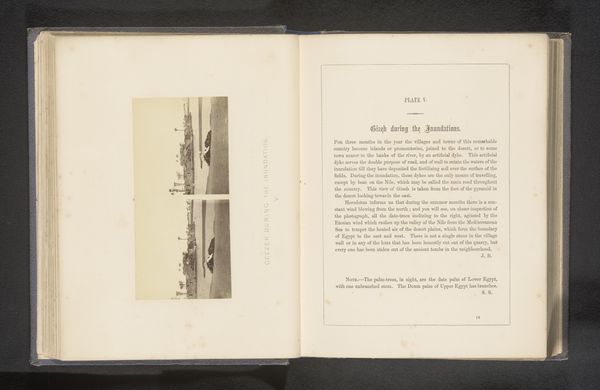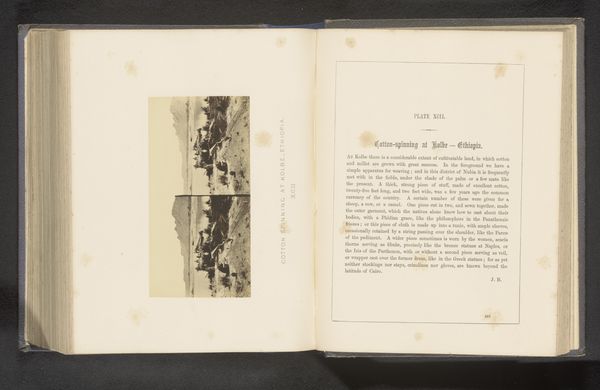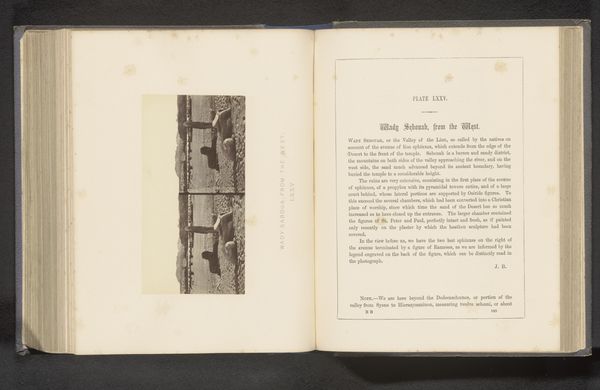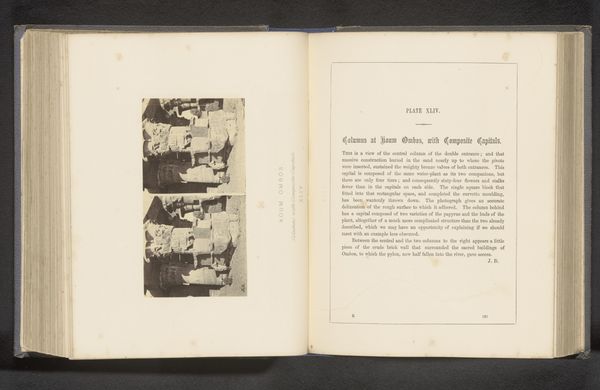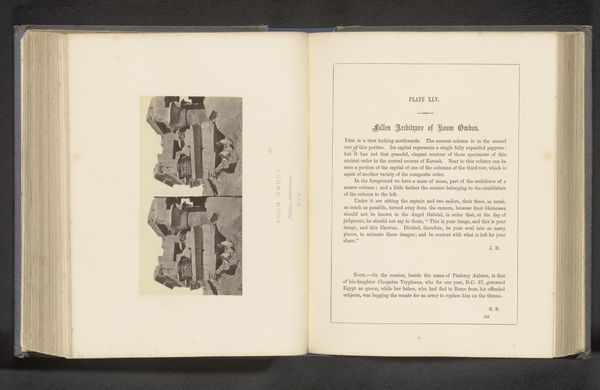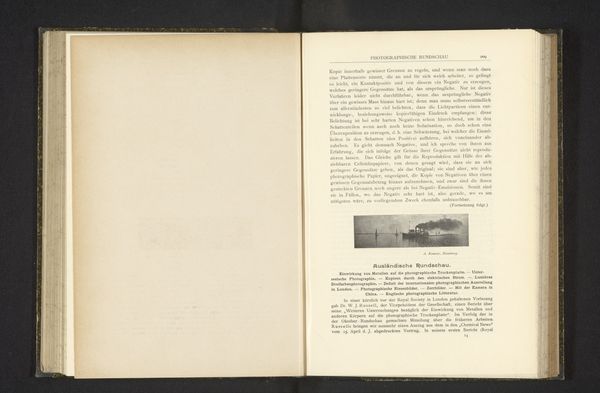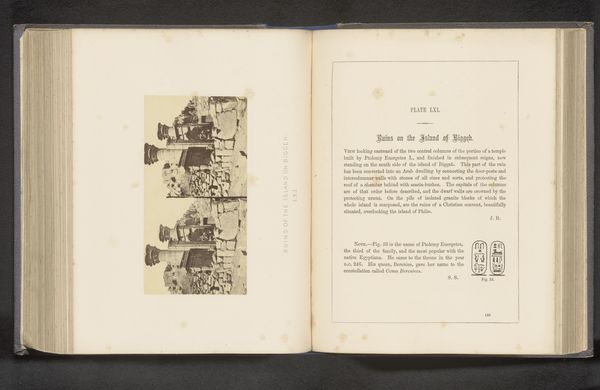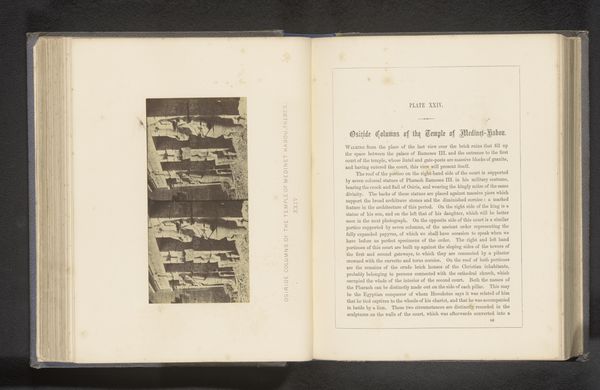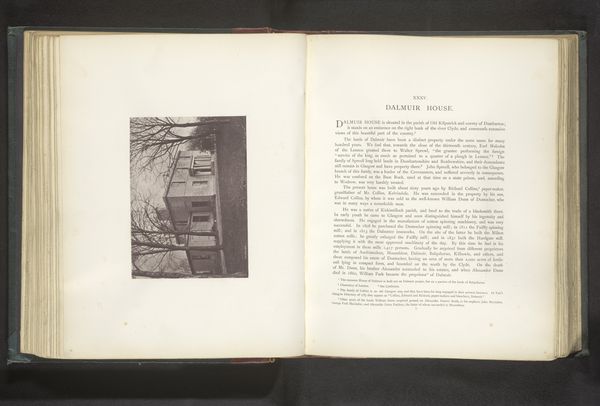
Sculpturen van sfinxen en van Ramses II bij Wadi es-Sebua before 1862
0:00
0:00
print, photography, sculpture
# print
#
landscape
#
ancient-egyptian-art
#
photography
#
ancient-mediterranean
#
sculpture
Dimensions: height 76 mm, width 144 mm
Copyright: Rijks Museum: Open Domain
This photograph of sculptures of Sphinxes and Ramses II at Wadi es-Sebua was taken by Francis Frith sometime between 1856 and 1860, and resides within a book. Frith was one of the first British photographers to travel to the Middle East, at a time when photography was still relatively new. His photographs offered Europeans a glimpse into distant lands, shaping perceptions and fueling colonial fantasies of the mysterious Orient. Consider how Frith's lens captures these ancient sculptures. As objects of Western fascination, they are also symbols of power, conquest, and the appropriation of cultural heritage. How might the representation of Ramses II, a symbol of Egyptian power, be interpreted within the context of British colonialism and its power dynamics? The photograph is a historical artifact, imbued with layers of meaning about identity, representation, and the complex relationship between the West and the Middle East. It prompts us to reflect on the gaze through which we view history and culture, urging us to consider the stories that are told, and those that are left untold.
Comments
No comments
Be the first to comment and join the conversation on the ultimate creative platform.
